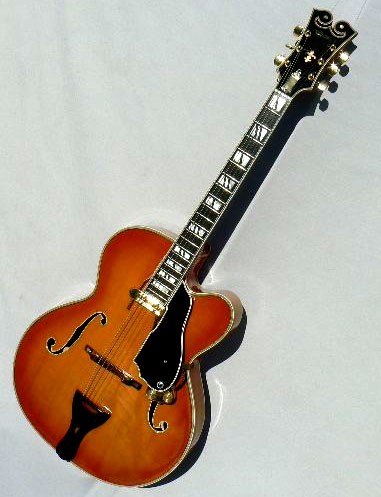
Home / Instruments /Accessories / Ordering / Tips / Friends
archtop.com
Albanus 17" Cutaway, ca. late 1960's
Price and Status: For pricing and hold status of this instrument, please check here. If this instrument does not appear on the Instruments page it has been sold. To be notified of examples of this or any other model in the future, please email your specific requests to [email protected].
Body size at lower bout: 17", Body Depth: 3 1/8" Scale length: 25" Nut: 1 11/16"
Finish: Sunburst finish, nitrocellulose lacquer type.
Materials: Solid bookmatched handcarved fine grain spruce top; full-depth handcarved solid maple back and sides with Venetian cutaway; tiger flame maple neck with walnut centerstripes; solid ebony fingerboard with block mother of pearl inlays; pearl diamond and headstock logo; 9-ply body binding, 3-ply neck and headstock binding; triple-bound f-holes; solid bone nut.
Hardware: Original hardware includes gold Schaller tuners; hand carved ebony tailpiece with pearl inlay, compensated adjustable ebony bridge with inlaid feet; bound black acrylic pickguard with original gold DeArmond Model 1100 Adjustable Rhythm Chief pickup with tone and volume control box and mini-jack output.
Notes: The decade of the 1960's saw the most explosive increase in guitar sales in the history of the instrument. In the wake of the folk revival, the British Invasion and the legacy of Elvis, baby boomers kept guitar manufacturers scrambling to meet exponentially increasing demand. Swamped in the tsunami of mass produced dreadnoughts and solid bodies, the venerable archtop guitar kept a lonely vigil at the top of the catalog, with the major manufacturers showing their lowest production figures in history.
Nowhere was this more true than in the rarified world of the hand built guitar. D'Angelico's long career had ended with the beginning of the decade, and his successor D'Aquisto wouldn't fully hit his stride until the next. Stromberg had passed away in the mid-50's, and the renaissance in hand building sparked by Benedetto and his followers was almost a quarter century away. Despite the setbacks, a hard core of working session players, sidemen and soloists continued to demand hand-carved instruments crafted to their exacting specifications. Into the void stepped Carl Albanus Johnson.
According to Chicago guitarist Chuck Kling, Johnson was a Swedish immigrant schooled in violin making. He is said to have learned guitar craft at the Boston workshop of Elmer Stromberg, another builder of Swedish heritage. Relocating to Chicago in the 50's, Johnson built a reputation among the working players in the area with his finely crafted instruments which, like those of D'Angelico, were generally built to order. None of his instruments bear a date, but we understand he was active between the late 50's and his death in 1973, and that he probably produced no more than a hundred or so guitars in his career. (We believe this example to be one of his later guitars, owing to the presence of the original gold Schaller tuners.) Among the rarest of American archtop guitars, we believe most surviving specimens remain in the Midwest.
The 17" Venetian cutaway body is handcarved of highly figured fiddleback flame maple, finished in a subtle tobacco sunburst showing wood grain from rim to rim. The handcarved spruce top is quartersawn, bookmatched, and hand graduated throughout. The body binding is extravagant, with a full nine plies on the body and triple bound f-holes. Of particular note is the handcarved ebony tailpiece, which reflects Johnson's roots in violin building. Predating D'Aquisto by a number of years, Johnson may indeed deserve credit for introducing the wooden tailpiece on the modern archtop guitar. Expertly contoured with a slim contemporary feel, the birdseye maple neck is reinforced with a three piece centerstripe and is dead straight with smooth low action over a solid ebony fingerboard with excellent medium jumbo frets. An original gold DeArmond Model 1100 Adjustable Rhythm Chief pickup is installed, with tone and volume control box and mini-jack output. Now out of production for many decades, this classic pickup is a holy grail for many jazzers, and alone commands a princely sum on the vintage market.
This example has been maintained in superb 100% original condition, without cracks, pick, buckle, thumb or fingerboard wear, and showing only very light normal checking in the all-original nitro finish. The original multi-ply binding is tight to the body and in excellent shape. Of particlar note is the double scroll headstock, a highly distinctive design somewhat reminiscent of (and possibly predating) a similar contour used by noted builder Sam Koontz. This example is the only Albanus we have seen with this headstock design to date. The body is nicely lightweight and well balanced, just 6 lb. 1 oz., and the voice of this X-braced guitar is particularly clear, vibrant and musical, with a deep woodiness that is truly exceptional under the ear. Slim, low action with orginal medium-jumbo frets over a comfy gentle D profile neck. A thrilling performer, and one of the rarest American archtops ever, the Albanus is a continuing testament to the Stromberg of the Windy City.
Setup: This instrument is strung with medium gauge bronze roundwound strings (.013-.056). The guitar will accommodate lighter or heavier gauge strings, according to preference. String action is set at 5/64" to 6/64" at the 12th fret, with moderate relief for acoustic playing with medium strings. The action may be lowered or raised to your requirements with the adjustable bridge.
Case: Original black plush hardshell case.
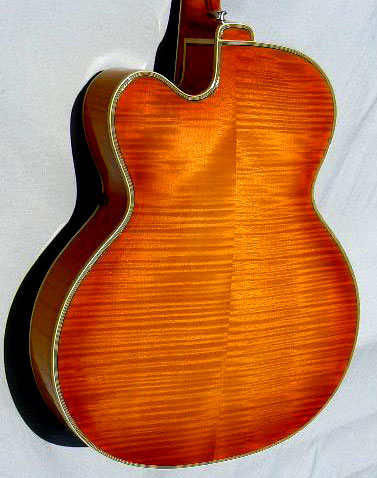
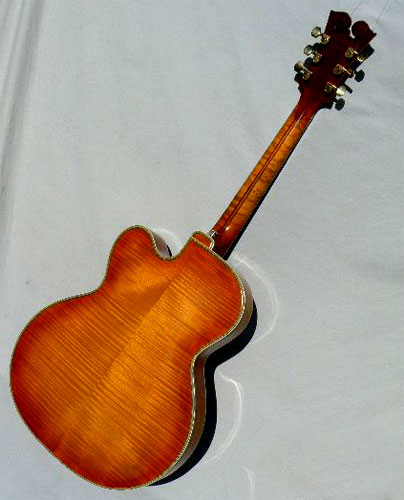
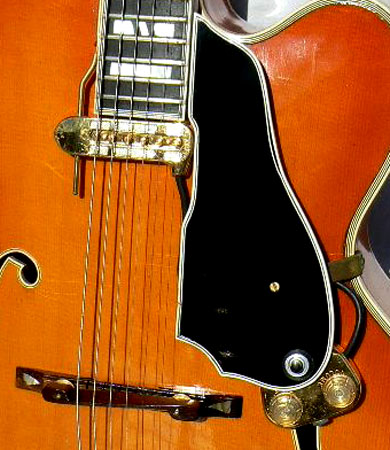
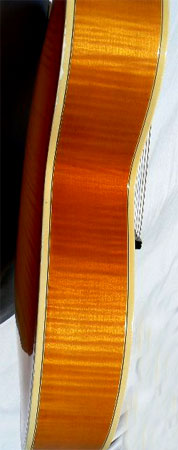
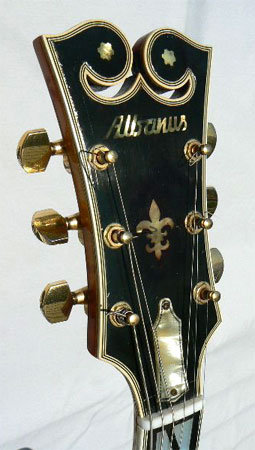
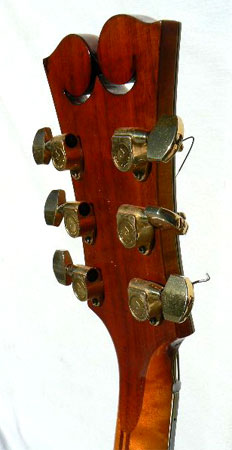
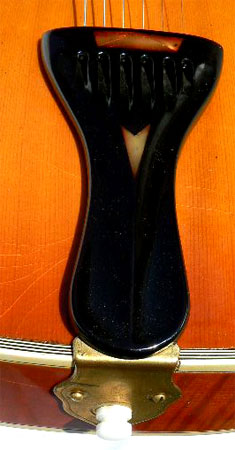
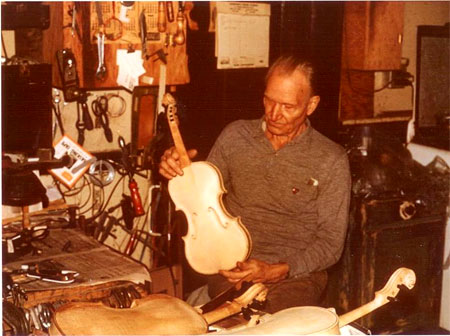
Home / Instruments /Accessories / Ordering / Tips / Friends
Carl Albanus Johnson in his shop. Photo courtesy Wade Thames.